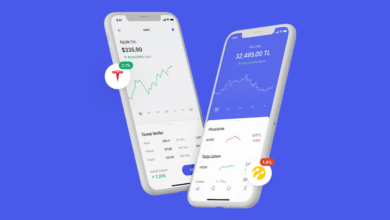CFPB Internal Shakeup to Supercharge Fintech, Big Bank Cops

The Consumer Financial Protection Bureau’s enforcement and supervision teams, including those overseeing financial technology firms and other nonbank lenders, will soon get a direct line to Director Rohit Chopra to correct potential violations.
The organizational restructuring, teased this week, will remove a buffer between the units and the head of the agency, potentially allowing the CFPB to act faster in going after the wide array of companies under its purview.
The change is part of Chopra’s broader plan to speed the agency’s response to developments in the marketplace, said Jenny Lee, a former CFPB enforcement attorney.
“Even in the operational aspects, he’s trying to make supervision able to go faster,” said Lee, the founder of Tessellate Law, a San Francisco-based tech-focused practice.
The CFPB has used its unique powers to directly examine debt collectors and student loan servicers, and recently floated a proposal to supervise large digital payments companies, with
The agency also oversees large banks and credit unions, nonbank mortgage lenders, and other firms explicitly outlined in the 2010 Dodd-Frank Act, as well as companies it has the authority to designate.
The CFPB’s enforcement and supervision heads currently report to an associate director for the agency’s Supervision, Enforcement, and Fair Lending Division. The system provides a buffer between the enforcement and confidential supervision units and Chopra.
The new structure adds to the power of the current enforcement and examination chiefs—Eric Halperin and Lorelai Salas, respectively—and gives Chopra a more direct hand in their units’ work, according to Lucy Morris, a former deputy enforcement director at the CFPB.
“They’re both rising through the org structure and don’t have to go through a middleman,” Morris, now a Hudson Cook LLP partner, said.
With the changes, Chopra would be the deciding vote on whether to bring an enforcement action or handle a potential violation through the supervisory process.
The organizational change is still in progress, and was mentioned in a procedural rule the CFPB adopted this week that updated its process for examining individual nonbank financial institutions that could pose risks to consumers.
Flattened Structure
The bureau’s supervision and enforcement division has undergone restructurings before.
Former Acting Director Mick Mulvaney, a Trump administration appointee, moved the fair lending unit into the director’s office, a move critics at the time said was intended to weaken it. Patrice Ficklin, the CFPB’s longtime assistant director for fair lending and equal opportunity, still works out of the director’s office.
The latest change is a substantial shift. It was first announced in an internal all-hands Feb. 16 email from Chopra that the CFPB provided to Bloomberg Law.
Chopra in that email said David Uejio, who had been the acting associate director in charge of the SEFL division, would be detailed to the Federal Housing Finance Agency to work on consumer protection and fair housing issues. Uejio previously served as the CFPB’s acting director in the Biden administration’s early months.
With Uejio’s departure, the CFPB will take the opportunity to turn SEFL into separate enforcement and supervision units, Chopra said.
“A flatter organization structure will allow us to be more agile in our response to emerging risks and will facilitate faster decision-making,” Chopra said in the email.
Halperin and Salas had developed “close cooperation” across enforcement and supervision at the agency, the CFPB director added.
But the previous structure played an important role in mediating any differences between the two units, Morris, from Hudson Cook, said. The unit chiefs could vote on whether a matter flagged by CFPB examiners should be handled through the confidential supervision process or referred to enforcement, with the SEFL associate director serving as the deciding vote.
In some instances, CFPB examiners can get banks and other companies to return money to harmed consumers or fix internal policies without a public enforcement action, an outcome most companies prefer.
Along with Uejio’s departure, his deputy, David Bleicken, was reassigned within the CFPB, according to Chopra’s email.
None of those changes were announced publicly, and the CFPB has yet to update the organizational structure on its website.
Designation Process
The CFPB’s rule this week also clarified some aspects of its process for bringing under its supervision nonbank companies deemed risky to consumers.
In April 2022, the agency said it would begin using a “dormant authority” under Dodd-Frank to designate such companies. It used the authority in February to designate installment lender World Acceptance Corp., over the company’s objections.
The CFPB this week said it will publish supervision orders issued to companies deemed a risk that object or don’t respond. Orders will remain confidential for companies that agree to them.
“If you’re going to fight the bureau, they’re going to make it public,” said Joann Needleman, the leader of Clark Hill PLC’s financial services regulatory and compliance practice.
The CFPB also gave itself some leeway to determine how long companies will remain subject to special supervision for risky activities, replacing a two-year limit. The agency said it still anticipates most special supervision would last two years, however.
“It just seems unclear about how this would work and there’s the risk of different treatments—and nobody would know because it’s all nonpublic,” Morris said.



